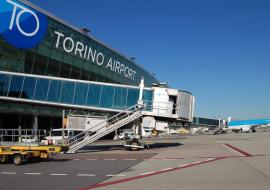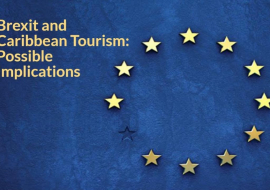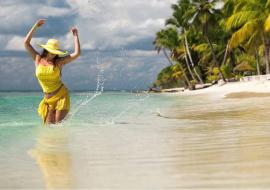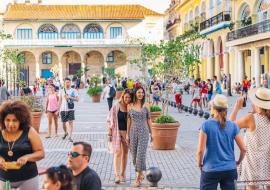Discover Aruba’s Wild Side
Given a choice between a snowy mountain and a sandy beach, I prefer the cold. But my wife is from Miami and my infant son howls when exposed to a chill. So this year I deferred to them, and we headed to Aruba.
I got a glimpse of the island’s beauty some 15 years ago, as I looked out the window of a puddle-jumper circling Aruba during a stopover en route to Trinidad. About 32 km long and 10 wide, Aruba is carpeted in some areas with green, scraggly vegetation and a few steep hills, while the north side is desert-like, peppered with cacti and wild rock formations. White sand rings the south and west shores, and azure water demands a visit.
It doesn’t disappoint. The temperature hovers year-round at about 27C. The water is gorgeous on the southern beaches with their sugary white sand. Aruba’s main source of income is tourism, so visitors are made to feel welcome. In fact, the Aruba Tourism Authority has a new campaign: “Aruba - 90,000 Friends You Haven’t Met Yet.” Cruise ships dock daily at Oranjestad and disgorge passengers to shop or dine in the busy downtown.
Our group of a dozen friends and family stayed a few kilometers away, off Eagle Beach at Oceania Residences, where visitors rent condos from owners -- arubacondo.com. The beach was across the street but we had unobstructed views of the sea from our rooms. The beach was relatively quiet with few crowds.
A short drive northwest of Eagle Beach, high-rise hotels and restaurants line crowded Palm Beach. Businesses on the beach rent out sailboats and windsurfers, lead sunset cruises or provide fishing expeditions.
We booked a snorkeling and sunset cruise aboard the 14-metre “Ali Kai” catamaran with Marcel’s Watersports. At about $50 a head, we got a three-hour cruise up toward the northern tip of Aruba for a snorkel near Arashi and Malmok Beaches. Schools of fish crowded around as we swam in the clear warm water. Parrotfish, filefish and sergeant major fish prowled as starfish lurked on the bottom. We cruised back to Palm Beach as the sun set.
But Aruba offers more than the sea for outdoor adventurers. Much of the northern side of the island is wild. About 20 percent of the island’s 180 sq. km lies within park boundaries. The Arikok National Park has biking and hiking trails leading up to views of the rocky north coastline. Check out the unusual rock and cave formations, including natural rock bridges eroded by millennia of waves crashing into and undercutting the rocky coast.
We rented a Jeep and went off-road for most of a day, tracking the coastline from the northern tip of Aruba to Conchi, or the Natural Pool. While less than 16 km as the crow flies, the trip took many more kilometers negotiating treacherous gullies, dodging boulders and climbing seemingly vertical trails.
After a hot day bouncing around in the back of the Jeep, we were rewarded with a secluded pool of seawater protected from the rough surf by cliffs and rock formations. Big waves hit the rocks and periodically wash into the pool in a strong, yet gentle waterfall. If off-road driving isn’t your speed, let the professionals from one of the tour companies do the driving. ABC Aruba Tours in Oranjestad offers a day trip, abc-aruba.com/.
Our group included two young children, so the rugged terrain of the north was out for them. But the Butterfly Farm near Palm Beach made up for what they missed. Hundreds of colorful insects flutter about in a large mesh enclosure. You can see 35 species of the creatures in all stages of development, from egg to caterpillar, pupa and finally a butterfly.
Tickets are relatively expensive (adults about $18, children about $10) but good for the length of your visit to Aruba, so take the kids often. As for dining, we had several forgettable meals close to the beach but the food at restaurants on Irausquin Blvd. was generally much better, including great tapas at Salt & Pepper and good seafood at Fishes & More.













